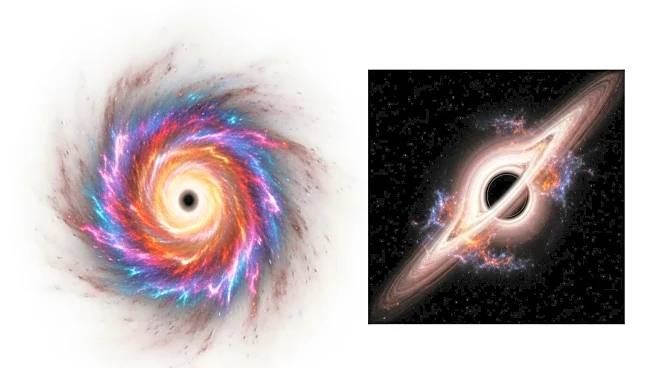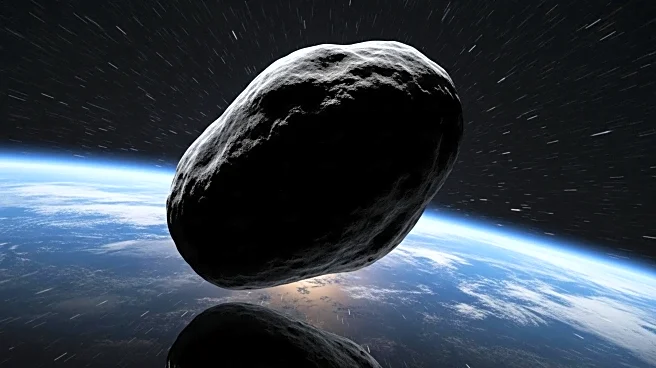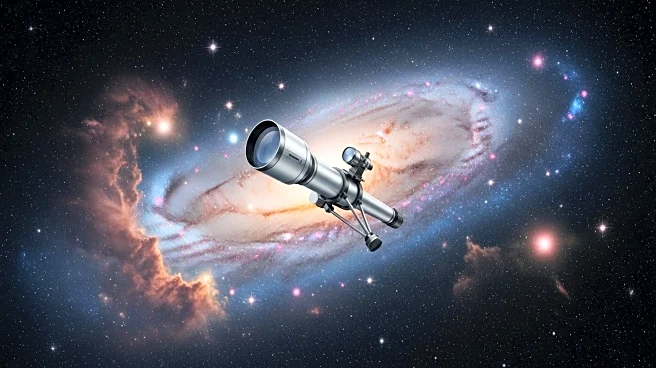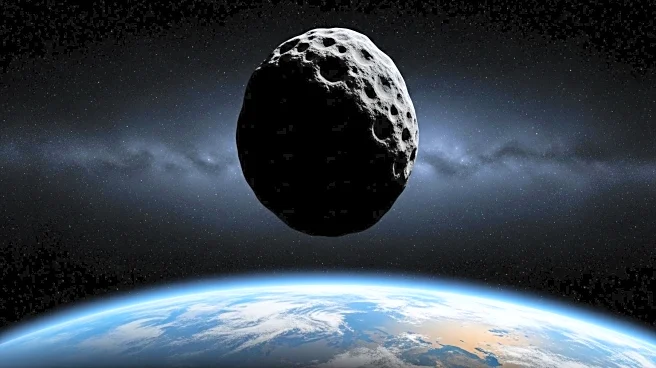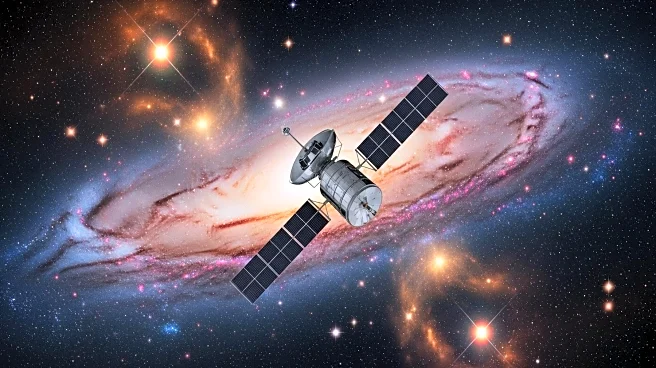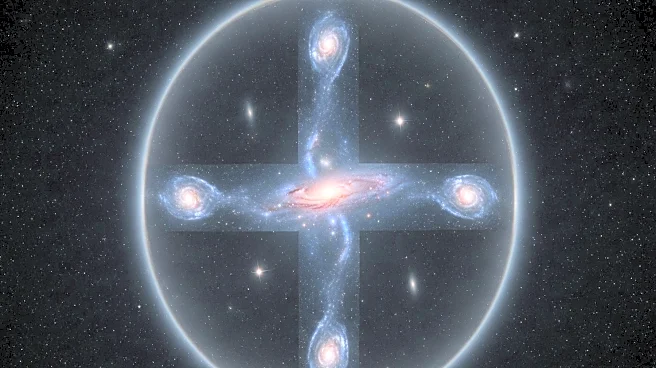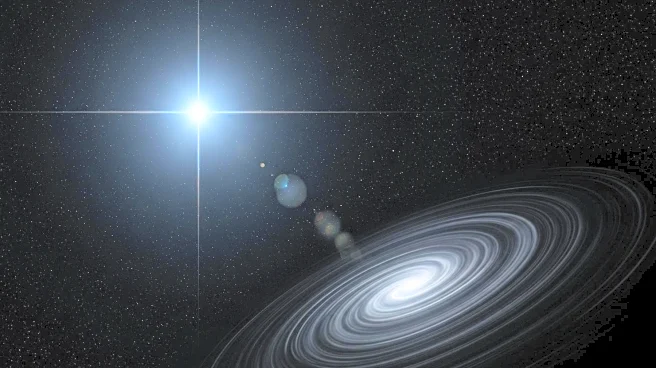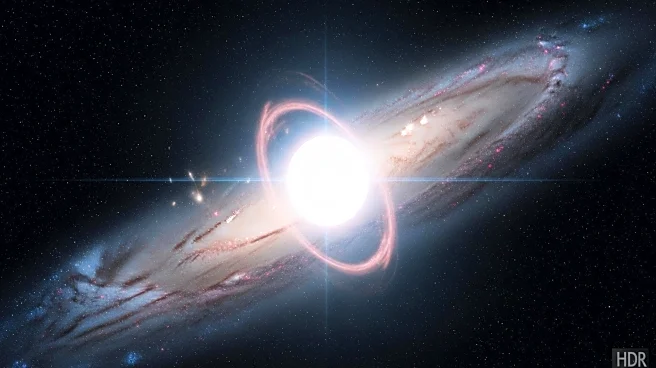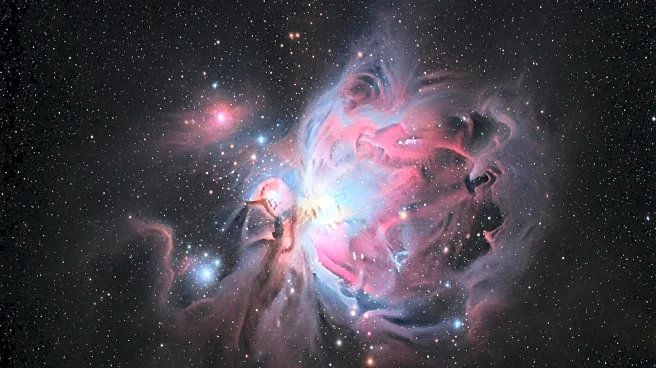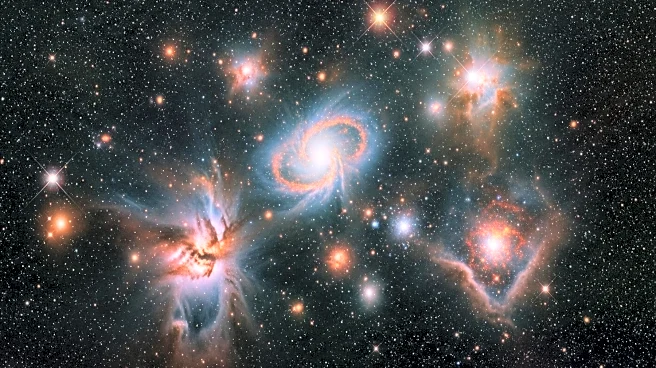What's Happening?
NASA's Chandra X-ray Observatory has identified a black hole growing at an unprecedented rate, exceeding the Eddington Limit, which is the usual growth limit for black holes. This black hole, located 12.8 billion light-years from Earth, is about a billion times the mass of the Sun and is producing more X-rays than any other black hole observed in the first billion years of the universe. The black hole powers a quasar, RACS J0320-35, which is an extremely bright object that outshines entire galaxies. The discovery was made possible through observations from Chandra in 2023, revealing that the black hole is growing at a rate 2.4 times the Eddington limit.
Why It's Important?
This discovery is significant as it provides insights into how some black holes can reach enormous masses relatively quickly after the Big Bang. Understanding the growth of such black holes can help scientists test different theories on how black holes are born and evolve. The rapid growth rate of this black hole could also contribute to the creation of jets of particles moving away at close to the speed of light, a phenomenon that is rare for quasars. This finding could help address one of the biggest questions in astrophysics: how the universe created the first generation of black holes.
What's Next?
The research team plans to continue studying the black hole to understand its growth dynamics better. The data collected from Chandra will be used to refine theoretical models and explore the conditions that allow such rapid growth. This could lead to new insights into the early universe and the processes that govern black hole formation and evolution.

